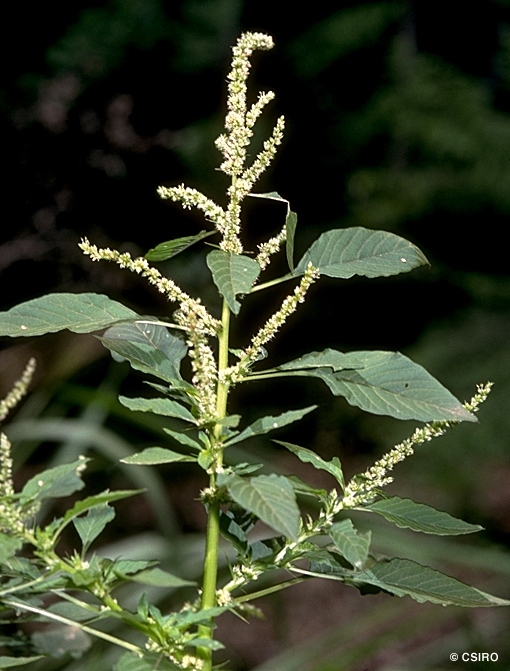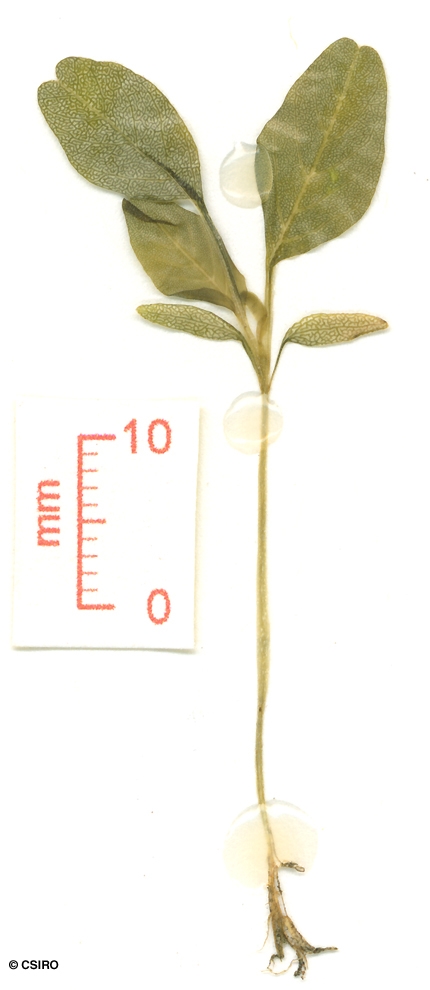Australian Tropical Rainforest Plants - Online edition
Amaranthus spinosus L.




Linnaeus, C. von (1753) Species Plantarum 2: 991. Type: Habitat in Indiis.
Burr, Needle; Needle Burr; Spiny Amaranth; Spiny Pigweed
Usually flowers and fruits as a weedy plant about 1 m tall.
Inflorescence densely flowered, each flower subtended by a bract. Tepals white or translucent except for a green midrib, papery, tapering to a fine point at the apex. Male flowers: Flowers about 2 mm long, tepals about 2 mm long. Anthers about 1 mm long on short filaments. Female flowers: Flowers about 1.5-2 mm long, tepals about 1.2 mm long. Ovary, style and stigma about 2 mm long. Ovary green, 2-3-lobed, the 'equator' marked by a line. Styles very short.
Fruit circumscissile, about 1.5-2 mm long, splitting +/- at the 'equator'. Perianth persistent at the base and stigmas persistent at the apex. Seeds about 1 x 1 x 0.5 mm. Embryo +/- C-shaped, located on the margin of the seed just inside the testa. Cotyledons about as wide as the radicle.
Cotyledons linear, about 4-9 x 1-2.5 mm. Petioles slender. First pair of leaves ovate, apex retuse, borne on long slender petioles. At the tenth leaf stage: stems spiny, spines channelled and about 5-10 mm long. Petioles long and slender. Leaf blades emarginate at the apex. Seed germination time 8 days.
Suspected of being poisonous to livestock. Everist (1974).
Despite the spine, which cause discomfort for the consumer, this plant has been used both as a spinach substitute and in medicine. Cribb (1981).





